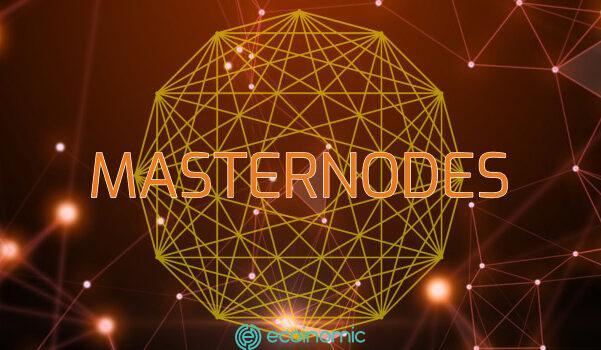Advertisement
What is masternode?
Masternode is a full node (server or highly configurable computer) that provides proprietary services, validates instant transactions, and participates in network governance through voting on changes in the ecosystem.
Masternodes were launched by Dash project in 2014, applying Proof of Stake (PoS) algorithm, overcoming the disadvantages of Proof of Work (PoW) mechanism, splitting miners to speed up transaction and achieve distributed consensus.
Each masternode has different ROI depending on the protocol and blockchain. Masternode provides solutions that instantly monitor anonymous transactions, enhance system security and make the transaction process fast.
After 6 years of operation, masternode has attracted more than 160 coins applying masternode with a value of more than $1 billion.

Light node, full node and masternode
Light node, full node and masternode operate on protocols, defining the rules, features and functions of a particular blockchain. However, each type assumes its own roles and tasks.
Node is the most basic type of computing device that supports blockchain, stores, transmits and preserves data on the network. When new transactions in a block are transmitted by a node to the entire network, other Nodes verify the validity of the transaction. The consensus of the network is reached when that block is added to all copies of the blockchain.
Light node or regular node will only download enough blockchain data to process and verify transactions. Therefore, the workload of these nodes is minimal.
To enhance the security of the network, full node contains a complete copy of the blockchain’s transaction history and sends new blocks of transactions for masternode to verify.
To put it simply, masternode is full node that performs specialized functions on the blockchain, has a higher level of responsibility and authority in voting on changes in the ecosystem and performing protocol operations.
How does masternode work?
Masternode serves as a server on the decentralized blockchain network it supports, containing a full copy of the blockchain ledger and also taking on additional responsibilities. Masternode can interfere in voting events and execute protocol operations depending on the nature of the blockchain.
For example, on Dash, masternode has more permissions than a regular node and can be used to send private transactions (PrivateSend) or instant transactions (InstandSend). Dash masternode also has an governance role and participates in voting to determine whether to approve or reject new developments and protocol modifications on the Dash network.

Masternode operators must own a significant amount of collateral (usually native coin of the blockchain) to operate a masternode. They are guaranteed annual income for the services provided that strengthens the stability and loyalty of the network.
Conditions to become a masternode
Depending on the cryptocurrency, the setup of a masternode varies. However, the process to create masternode involves downloading full nodes, staking tokens, configuring nodes, and connecting to the network. To become a masternode, the operators need to ensure the following conditions:
- Own a significant amount of coins. For example, to run a masternode, Dash requires owning 1,000 DASH – which is worth tens of thousands of dollars up to $1 million.
- Provide dedicated servers, static IP addresses
- Connect 24/7.
Masternode is considered a useful tool to validate blockchain and generate passive income for operators.
Do masternodes cause tokens to increase in price?
In the short term, masternode can reduce the supply of tokens. According to supply and demand theory, the price of tokens will increase as supply decreases.
However, masternode does not have much impact on the token price in the long term. Since the growth of tokens in the long term is influenced by many different factors, typically the Inflation rate.
After a period of operation, the masternode will cause inflation. The higher the inflation rate, the greater the number of people registered to operate masternode, the higher the number of tokens. If the inflation level is higher than the demand for tokens, the token price will gradually decrease.
Benefits and risks of masternode
Benefits
For ecosystems
- Ensure network security
Masternode owners can accept or reject any transactions guaranteed by miners which prevents miners’ collusion from disrupting the cryptocurrency ecosystem.
- Privacy
PIVX – a fork of DASH applying custom version of the Zerocoin protocol which improves the anonymity of the cryptocurrency. Users can convert PIVX to zPIV, completely separating identity from transaction ID. Therefore, the asset is converted anonymously and verified through PIVX masternode.
- Flexibility
Masternode applies PoS algorithms that overcome the limitations of PoW, avoid mining of Liquidity Pools and consume less energy.
For masternode operators
- Passive profit
Masternode owners will receive passive income from their investment and services provided to the network. The reward received in the form of the project’s tokens corresponds to the seniority level of the masternode operators. Masternode is considered an effective method of hodling from staking tokens and receiving interest from the network.
- Voting rights
Masternode operators can participate in voting on the projects they support.
Risk
For ecosystems
- Centralization
Projects that apply masternode are limited to a certain number of masternodes that creates a centralized platform.
- 51% attack
Masternode holders can perform 51% attack, destabilizing the cryptocurrency ecosystem and affecting the remaining token value. However, when implementing a 51% attack plan, the masternode owner will not receive a block reward and lose a portion of the total staked token.
For masternode operators
- Barriers to entry to masternode
Operating a masternode requires extensive and advanced technical resources and knowledge.
The masternode selection process is extremely strict and thorough, only those who qualify can become masternode owners.
The masternode operator needs to ensure ownership of a certain amount of coins to stake. In addition, server hosting fees will become a financial burden when the amount of data uploaded and downloaded and the energy cost to maintain the operation of the server are quite large.
- The risk of falling token prices
To execute masternode, the operator must lock a certain number of tokens as collateral to start staking. They cannot use that token to implement their portfolio diversification strategies.
In particular, in case the rising inflation rate causes the token price to fall, the masternode operator will face the risk of loss if they do not withdraw the token in time before the project fails.
Difference between masternode and staking
Like staking, masternode makes profits from locking tokens and receiving rewards and interest from the network. However, masternode is more difficult to access than staking.
For staking, investors only need to lock coins/tokens in the wallet and receive rewards without much technique. Meanwhile, masternode owners need to own significant amounts of coins and require dedicated servers, static IP addresses, and constant connections.
Most users can participate in staking easily and conveniently but the operation of masternode has a fairly high barrier to entry with a thorough selection process.
Therefore, masternode is suitable for long-term investors and aims to develop and secure the network.
Vision and execution capabilities of Dev team
To implement the project, the development team needs to build a diverse ecosystem, attract many people to invest, and promote the demand for tokens.
In addition, the team should create a large community with solid support, build belief in the vision and development of the project.
Conclusion
Masternodes are an effective investment solution for experienced investors who have a long-term vision and own large capital in the market.
However, for those who are new to the cryptocurrency market or have small capital, ICO and IEO will be more suitable investment than masternode.
















